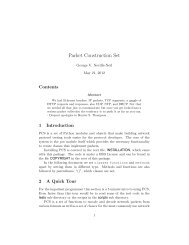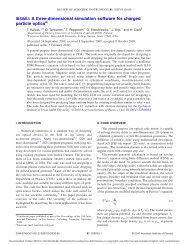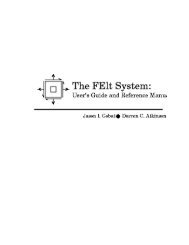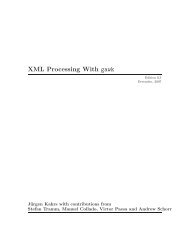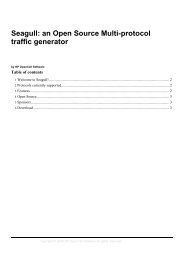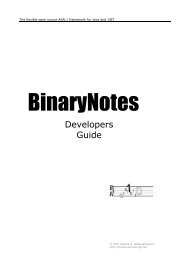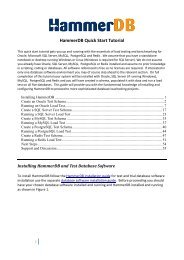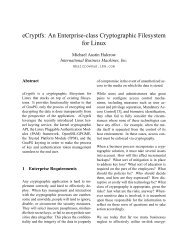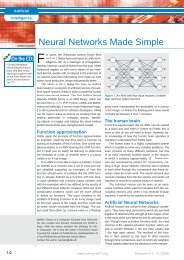System Management Bus (SMBus) Specification, version 2.
System Management Bus (SMBus) Specification, version 2.
System Management Bus (SMBus) Specification, version 2.
Create successful ePaper yourself
Turn your PDF publications into a flip-book with our unique Google optimized e-Paper software.
<strong>System</strong> <strong>Management</strong> <strong>Bus</strong> (SM<strong>Bus</strong>) <strong>Specification</strong> Version <strong>2.</strong>0<br />
The device decodes the two internal flags as described in the following table:<br />
Address Valid (AV Flag) Address Resolved (AR Flag) Meaning<br />
Cleared<br />
Cleared<br />
The device does not have a valid slave address<br />
and will participate in the ARP process. This is<br />
the POR state for a device that doesn’t support<br />
the PSA or if it does it has not previously been<br />
assigned a slave address.<br />
Cleared Set Illegal state!<br />
Set<br />
Cleared<br />
The device has a valid slave address but must<br />
still participate in the ARP process.<br />
Set<br />
Set<br />
The device has a valid slave address that has<br />
been resolved by the ARP Master. The device<br />
will not respond to the “General Get UDID”<br />
command. However, it could subsequently<br />
receive an “Assign Address” command and<br />
would change its slave address accordingly.<br />
Table 8: Device decodes of AV and AR flags<br />
5.6.3.13. Enumeration rules<br />
Any device may enumerate the bus provided that the device is intelligent and capable of doing so.<br />
Additionally, the enumerating device must provide “snooping” capabilities to guarantee that multiple<br />
devices aren’t enumerating/ARPing at the same time. An enumerator must adhere to the following rules:<br />
1. If an enumerator sees a “Prepare to ARP” or “Get UDID” command it must immediately stop<br />
enumerating.<br />
<strong>2.</strong> An enumerator must monitor the bus for ARP commands for at least 2 seconds before beginning the<br />
enumeration process with the “Prepare to ARP” command.<br />
3. If an enumerator sees an unassigned address then it must issue a host notify command and stop<br />
enumerating.<br />
5.6.3.14. Example scenarios<br />
The ARP can be illustrated by the following examples. Note that the UDID values are simple examples for<br />
illustrative purposes. They do not necessarily represent legal values.<br />
Example 1<br />
In this scenario assume the following:<br />
• The ARP Master has already exited its reset state and has run the ARP. The Used Address Pool does<br />
NOT contain the values 1001 000, 1001 001, … 1001 111.<br />
• New Device A has a UDID of 0x8123456789ABCDEF0000000000000000, does support the<br />
Persistent Slave Address and was previously assigned the slave address 1001 001. Its Address Valid<br />
flag is set but its Address Resolved flag is cleared.<br />
• New Device B has a UDID of 0xF123456789ABCDE00000000000000000 and does not support the<br />
Persistent Slave Address. Its Address Valid and Address Resolved flags are cleared.<br />
• New Device C has a UDID of 0xF123456789ABCDE10000000000000000 and does not support the<br />
Persistent Slave Address. Its Address Valid and Address Resolved flags are cleared.<br />
• All devices exit their power on reset state at the same time.<br />
SBS Implementers Forum 50



